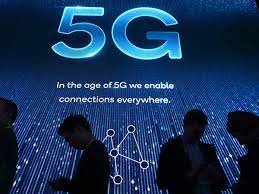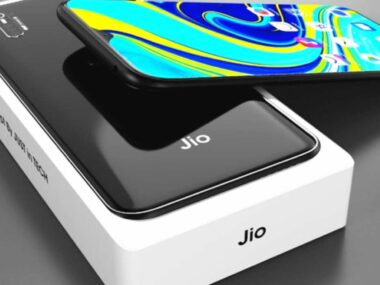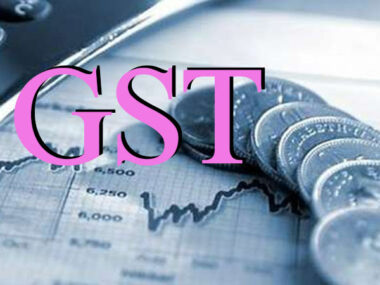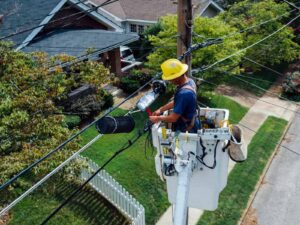On July 26, India’s first 5G call was made between the Prime Minister’s Office in New Delhi and the office of the President of India in Rashtrapati Bhavan. The call was made using a 5G telecom network provided by Reliance Jio Infocomm Ltd. This marks the beginning of India’s journey to becoming a 5G leader.
What is 5g and why is it so important for India?
The rollout of 5G in India is expected to revolutionize the country’s telecom sector, offering faster internet speeds and improved connectivity. The technology promises to enhance the performance of existing applications while enabling new ones that were not previously possible. For instance, it will enable the widespread adoption of IoT devices, which can be used in various fields such as healthcare, transportation, and agriculture.
The advent of 5G will also spur innovation and technological advancements across multiple industries. With increased bandwidth and lower latency rates, businesses can leverage cutting-edge technologies like AR/VR to create immersive experiences for customers or train employees remotely. Furthermore, 5G networks are expected to play a crucial role in driving economic growth by facilitating the deployment of smart cities and supporting Industry 4.0 initiatives.
Overall, India stands poised at an exciting juncture with the first successful call made on a 5G network serving as a testament to its potential impact on the country’s digital transformation journey. As more telecom companies gear up for their 5G launches in India over the next few years, we can expect widespread disruption across industries that will shape our way of life for years to come.
The first 5g call in India: How did it work and what was the impact?
The first 5G call in India was made by Ashwini Vaishnav, the Minister of Communications, on July 5th, 2021. The call was made using Ericsson’s equipment and spectrum allocated to Reliance Jio Infocomm Ltd. During the call, Vaishnav spoke about the benefits of 5G technology and its potential impact on industries such as healthcare, education, and agriculture.
The successful completion of this call marks a significant milestone for India’s telecom industry. It has brought India one step closer to embracing the next generation of wireless technology that promises faster download speeds, lower latency, and increased network capacity. With 5G expected to drive innovation across sectors such as transportation, manufacturing, and entertainment; it could potentially boost economic growth in India.
Overall, this historic achievement reinforces India’s position as a global technology leader and highlights the country’s commitment to building a digitally empowered society. While there is still much work to be done before commercial deployment can take place nationwide; the successful test run signifies an exciting future ahead for Indian consumers and businesses alike.
The future of 5g in India: What obstacles still need to be overcome?
India has finally taken its first step towards a 5G future. The country’s Minister of Communications, Ashwini Vaishnav, made the first-ever 5G call in India on July 23, 2021. Despite this milestone achievement, there are still several obstacles that need to be overcome for India to fully embrace the potential of 5G technology.
One of the biggest challenges is infrastructure. The government needs to invest in building a robust and reliable network that can support high-speed internet services across the country. In addition, telecom companies need to work on improving their existing networks and investing in new technologies like small cells and fiber optic cables.
Another obstacle is affordability. While many people have smartphones in India, not everyone can afford high-end devices capable of supporting 5G technology. Telecom companies will need to find ways to make these devices more accessible and affordable for all users.
Overall, while India has taken an important step towards a 5G future with its first call by Ashwini Vaishnav, there is still much work to be done before we see widespread adoption of this technology across the country.
Ashwini Vaishnaw makes India’s first 5G call at IIT Madras
Ashwini Vaishnaw, the Minister of Communications and Electronics & Information Technology, made India’s first 5G call at IIT Madras on July 14th, 2021. The call was placed using a test bed made by the Indian tech company C-DoT (Centre for Development of Telematics). This accomplishment marks a significant step forward in India’s efforts to develop its indigenous 5G technology.
During his visit to IIT Madras, Vaishnaw also inaugurated the C-DoT’s advanced manufacturing facility that aims to produce next-generation telecom equipment. This facility is set to play an essential role in boosting the development of Made-in-India products and services for the global market.
Overall, this milestone event has major implications not just for India but also for the world as it showcases India’s progress toward becoming a leader in cutting-edge technology.
You have this Prime Story as a Free Gift
The Indian telecommunications industry has been abuzz with the news of India’s first 5G call, made by Ashwini Vaishnav. This milestone marks a significant achievement for the country as it gears up to launch its fifth-generation network soon. The call was made using a test device, and Vaishnav spoke to fellow ministers for a brief period during the demonstration.
The successful 5G call is an essential step forward in India’s digital transformation journey. With this technological advancement, India can now offer high-speed internet connectivity, which will improve communication and foster innovation across various sectors such as healthcare, education, agriculture, and more. The government has also invested significantly in developing policies that promote the use of emerging technologies like AI and IoT to drive growth across different industries.
Overall, this Prime Story is an excellent gift for everyone interested in technology’s progress because it demonstrates how far countries have come in terms of connectivity. It shows that we are moving towards a future where faster data speeds are not just a luxury but a necessity for all sectors of society.
PM inaugurates India’s first 5G testbed; calls for a rapid rollout of the network
The Indian government has taken a significant step towards the implementation of 5G technology in the country. Prime Minister Narendra Modi recently inaugurated India’s first 5G testbed, which will pave the way for a rapid rollout of the high-speed network. The testbed, located at the Indian Institute of Technology in Mumbai, will enable companies to develop and test their 5G applications and services.
The Indian government’s push toward implementing 5G is aimed at boosting economic growth and creating new job opportunities. The network is expected to revolutionize industries such as healthcare, education, agriculture, and manufacturing by enabling faster connectivity and data transfer. The launch of India’s first 5G testbed is an important step forward in this direction and marks a significant milestone for the country’s digital infrastructure.
With this move, India joins other countries around the world that are already testing or rolling out their own 5G networks. However, there is still work to be done before widespread implementation can take place across India. This includes addressing issues such as spectrum availability and pricing, infrastructure development, security concerns, and more. Nonetheless, with its first testbed now live and operational, India has taken a crucial step forward toward realizing its vision for a connected future powered by advanced technologies like 5G.
Conclusion
In conclusion, India’s first 5G call by Ashwini Vaishnav marks a significant milestone for the country’s technological advancement. The successful test conducted at the Department of Telecommunications (DoT) headquarters in New Delhi signifies a giant leap toward making 5G technology accessible to millions of Indians across the country.
The introduction of 5G networks across India will change how people communicate and consume content. With download speeds that are up to 100 times faster than existing networks, mobile devices will become even more integral to daily life, enabling seamless streaming of high-quality video and audio content without buffering or lagging.
In addition, the widespread adoption of 5G will drive innovation in various sectors such as healthcare, agriculture, and education. As a result, the government and stakeholders within the telecommunications industry must continue investing in research and development to ensure that India remains at the forefront of technological progress.















